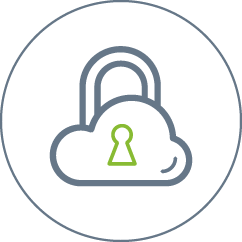IT Guy: Don’t send those financial documents over email, it’s a bad idea!Employee: Maybe, but it’s the quickest and easiest way.
*Cue data breach*
This classic scene plays out daily in companies across the world. Every day an employee, however unknowingly, puts their company at risk of a data breach. A famous playwright once said, “all the world’s a stage,” so how can companies ensure their employees’ actions don’t land them in the middle of a Shakespearean IT tragedy?
Why is Email Unsecure?
“Email, by its very nature, is unsecure: 99.9% of it is sent unencrypted. If it was invented today no one would use it. Emailing unencrypted documents ‘in the clear’ creates a potential chain of issues.”— Graham Cluley, Internationally Recognized Security Expert
A study by HALOCK says that over 70% of mortgage lenders allowed applicants to send sensitive information in the form of email attachments over unencrypted email. This may explain why 29% of data breaches are caused by “human error.”
Email risks exposing your data in three primary places:
- Your inbox and network
- The recipient’s inbox and network
- The email host’s servers
In addition to multiple inboxes or servers, various devices can contain the email as well. A compromised email could take the form of a lost business phone, a tablet without password protection, and even the quick absence from a work laptop.
Emails can be compromised in a server by being unencrypted. Even if your servers are secure, your recipient’s’ server security is not under your control. So, why accept this risk?
One way individuals try to mitigate this risk is by trusting the red padlock that appears on emails from email platforms like Gmail. This padlock is supposed to show when you are receiving an email that is not encrypted by TLS encryption. While this tool is especially helpful for transparency in your business communications, it does not ensure the total end-to-end encryption of your message or really allow you to control who access your attachment or email.
How Do I Make Safely Send Financial Information?
Sending financial information over email is risky business. But there’s no need to turn to carrier pigeons or the Enigma machine (and the inconvenience and problems these archaic solutions pose, because there is an alternative.
1. Online portals are a secure option for easy, secure file sharing. When choosing a secure online portal, the best options provide access from multiple devices (including your tablet or mobile device) and through various methods, so that way employees can access or send files anyway they need to. This includes their browser, file explorer, FTP client and more.
2. Another option for sending financial information over email is using a secure document URL. These URLs take the form of share links and allow the sender to share a quick link to the receiver to gain access to the document. The sender can manage access by choosing how many times the link can be accessed, setting a password or an expiration date.
Where Do I Find These Solutions?
One example of a platform that employs an online portal is SmartFile. Built with a responsive user interface that allows for accessibility on laptops, tablets and mobiles, SmartFile can work on any device. Furthermore, SmartFile has options to encrypt documents while at rest and during transfer, for maximum security.
SmartFile also includes granular user permissions. When sharing files or adding users, you can keep all information under the scope of your control. Limit the number of downloads in addition to who can delete or access folders. Or check out what happens after the link is sent with the SmartStats analytics and logging feature.
Sharing is made simple with a secure document URL. With passwords and expiration dates, as well as a secure portal, sending financial information over email can be safe. Employing the best technology and resources will help keep your financials safe, without the tragic Shakespearean ending.
Sending Financial Infromation Over Email?
Want Cloud Storage?

Need Enhanced Security?

